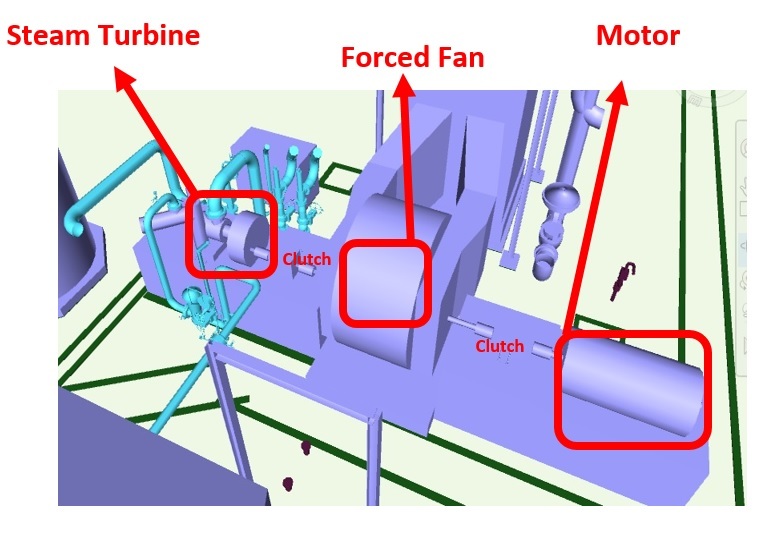Yes. The fan manufacturer should provide thermal growth projections. However, it is an easy matter to do this yourself. You need to know which bearing is fixed in the axial direction and the range of operating temperatures for the flue gas. For example, our largest induced draft fan has the fixed bearing on the turbine side and runs at 300 to 350 °F. The portion of the shaft that is within the fan box is approximately 10 feet long. 120 inches of 4140 carbon steel shaft heated up from 70 °F to 350 °F will grow almost 0.25 inches. The coupling on the motor side needs to be capable of accommodating an axial movement of at least 0.375 inch in order to have certainty that it will not fail from the axial movement. This required a specially designed greased gear coupling made for high axial displacement. We generally prefer to avoid greased gear couplings, but were not able to come up with a suitable design using a non-lubricated coupling.
An additional concern occurs for induced draft fans of this type. If the fan box is foot mounted and independent of the bearing pedestals, the vertical movement of the fan box must be accommodated. This does not affect the coupling alignment if the bearing pedestals are independent, outside of the fan box and cold supports. Instead, the vertical growth of the foot mounted fan box requires adjustment of the fan wheel inlet cone clearance. It can also create problems with the shaft seals where the shaft passes out of the fan box. In the fan I was describing above, the original clearance between the fan box and the shaft was not adequate and the fan box grew up into the bottom of the shaft at the seal locations. We had a hard shaft rub resulting in a failure. And, keep in mind, this is a shaft that is over 16 feet long and 12 inches in diameter at the seals.
Johnny Pellin

